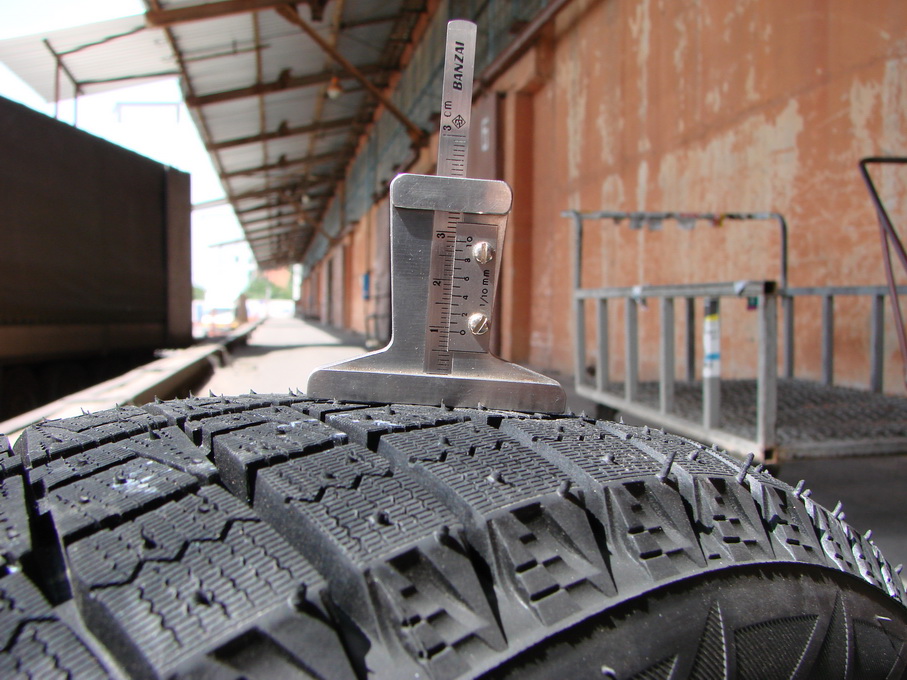When it comes to checking tire tread, there are a number of methods that can help you know if it’s time to replace a tire. Heavily worn tread will prevent a tire from performing as designed and can lead to unsafe driving conditions. One of the simplest, most common ways to check tread depth requires nothing more than a penny and a few moments of your time.
In the United States, tire tread depth is measured in 32nds of an inch. New tires typically come with 10/32” or 11/32” tread depths, and some truck, SUV and winter tires may have deeper tread depths than other models. The U.S. Department of Transportation recommends replacing tires when they reach 2/32”, and many states legally require tires to be replaced at this depth.
The idea of the penny test is to check whether you’ve hit the 2/32” threshold. Here’s how it works:
Place a penny between the tread ribs on your tire. A “rib” refers to the raised portion of tread that spans the circumference of your tire. Tire tread is composed of several ribs.
Turn the penny so that Lincoln’s head points down into the tread.
See if the top of his head disappears between the ribs. If it does, your tread is still above 2/32” , If you can see his entire head, it may be time to replace the tire because your tread is no longer deep enough.
When performing the penny tire test, remember not only to check each tire, but to check various places around each tire. Pay special attention to areas that look the most worn. Even if parts of your tread are deeper than 2/32”, you should still replace the tire when any areas fail the penny test.
Consistent wear around the whole tire is normal, but uneven tread wear could be a sign of improper inflation, wheel misalignment, or a variety of other things. If you see uneven tread wear, you should have a technician inspect your vehicle.
A simple way to check your tire tread depth is by using a tread depth gauge. You can find tire tread depth gauges at your local auto parts store. There are many models available, but an inexpensive simple graduated probe gauge will work just fine. All you have to do is stick the probe into a groove in the tread and press the shoulders of the probe flat against the tread block and read the result. All gauges should measure in both 32nds of an inch and millimeters.
You can find tire tread depth gauges at your local auto parts store. There are many models available, but an inexpensive simple graduated probe gauge will work just fine. All you have to do is stick the probe into a groove in the tread and press the shoulders of the probe flat against the tread block and read the result. All gauges should measure in both 32nds of an inch and millimeters.
Another indicator of worn out tread already lives in your tires themselves. Every performance, light truck, or medium commercial tire comes equipped with indicator bars (or wear bars) embedded between the tread ribs at 2/32”. They’re there to help you monitor tread depth and make decisions about tire replacement. Just look to see if the tread is flush with the indicator bars. If they are, it’s time to replace the tire.
While the penny tire test does deliver on what it promises – indicating whether tread has reached the legal limit – it may not be the best indicator of whether your tires are safe for the road.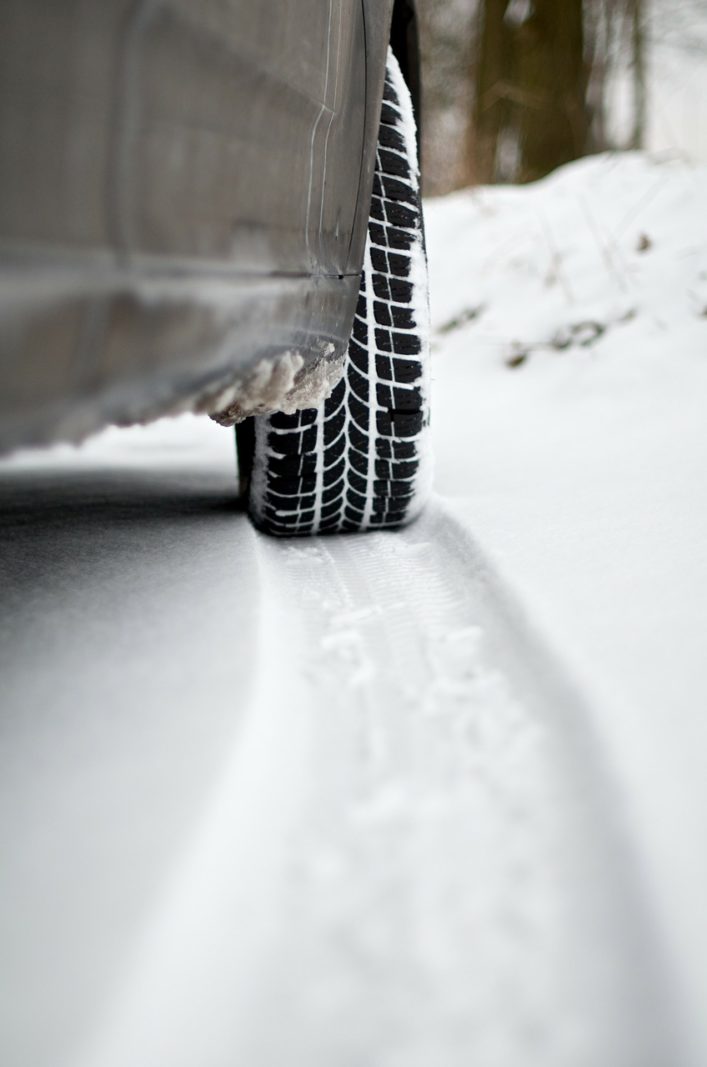 Tire performance can diminish significantly before your tread hits 2/32”. Even though the law deems fit for safe driving may not prevent you from hydroplaning or losing control in rainy, slushy conditions. If you think your tires may be close to needing replacement, have them checked out by a licensed mechanic.
Tire performance can diminish significantly before your tread hits 2/32”. Even though the law deems fit for safe driving may not prevent you from hydroplaning or losing control in rainy, slushy conditions. If you think your tires may be close to needing replacement, have them checked out by a licensed mechanic.
As Bridgestone reminds us, winter car maintenance and safety goes beyond tires. However, if you landed on this particular page, it’s because you want to know if your winter tires are still capable of delivering the performance you expect on snow- and ice-covered roads.
No need to ask your local mechanic. Here are various methods to calculate winter tire wear and prevent it.
Shopicar.com, 100% online, shop for your next car, buy online and get it delivered to you anywhere in Quebec!
Tread wear indicators
A quick, easy way is to refer to the tire's tread wear indicators located inside the grooves. They are bars made of hard rubber lying sideways across the tread. When the tread is flush with the wear indicators―2/32” or 1.6 mm―the tire needs to be replaced since it no longer provides effective traction on snow and ice.
They are bars made of hard rubber lying sideways across the tread. When the tread is flush with the wear indicators―2/32” or 1.6 mm―the tire needs to be replaced since it no longer provides effective traction on snow and ice.
Pre-winter wear level
If the depth of the tread measures less than 6/32” or 4.8 mm before the start of winter, the tire likely won't last a full season, or the equivalent of about 10,000 km. Those who plan to stretch their rubber's life one more season just to save money may wind up paying for a lot more than a new set of tires after months of heavy snowfalls.
Not all winter tires wear out at the same speed. Snow tires will generally last longer than models designed for icy conditions. Compound quality also plays a key role in tire durability.
The quarter test
A classic way to measure winter tire wear is to use a quarter. Insert a 25¢ Canadian coin in one of the grooves with the caribou facing down. If you see the tip of its nose, it means the tread depth no longer meets 6/32”, so the tire probably won't last all winter or 10,000 km.
Preventing premature wear: Tire pressure
Properly inflated tires will reduce wear and save fuel. Check the tire pressure once a week if you do a lot of mileage; in any case, check at least once a month.
Inflate any tire that does not meet the recommended PSIs for your vehicle. The information can be found in your owner's manual or a specific label inside the driver's door frame.
Tire rotation, balancing, and alignment
Tires should be balanced and rotated every 10,000 km in order to prevent uneven tread wear. Directional tires must be rotated on the same side of the vehicle (front-rear), while non-directional tires must be rotated to form an X (ex.: front left to rear right). Tire alignment is recommended as soon as you feel that your vehicle pulls to the left or right, or when you notice uneven tread wear.
Auto123.com now invites you to consult our latest buying guides for winter tires:
The Best Winter Tires for Cars & Smaller SUVs in Canada for 2021-2022
The Best Winter Tires for Larger SUVs & Pickup Trucks in Canada for 2021-2022
Please enable JavaScript in your browser to display pages properly.
8 (800) 707-65-40
Request a call
Remind password
Personal account
New customer
9+3=I hereby confirm that I have read and agree to the terms of the privacy policy and consent to the processing of my personal data. Learn more
Request a call
Leave your phone number and a convenient time to call, and we will call you back
Shopul. Komsomolskoye highway, 3b st. Business, 7st. Vaneeva, 209Aul. Golubeva, 7 st. Karl Marx, 60 vul. Comintern, 39, room 1st. Generala Ivlieva, house 24Aul. Fuchik, 36, Perekhodnikova st., 28/1 st. Dyakonova, 2 r. Gaugelya 2A/2pr. Gagarina, 37b 9 + 1 = I hereby confirm that I have read and agree to the terms of the privacy policy and consent to the processing of my personal data.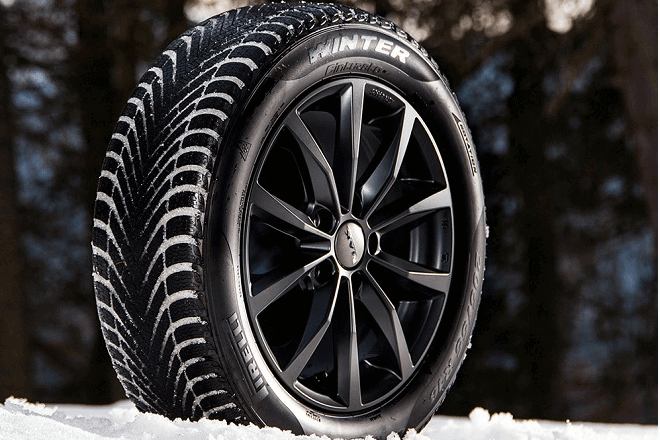 Learn more
Learn more
The tread depth determines the quality of car tires, their characteristics, predict how the tire can perform in various driving situations. To select a reliable rubber model, you need to figure out what the recommended values \u200b\u200bof the tread pattern of various types of tires are.
The pattern on car tires differs from the operating conditions in which the intended vehicle will be. What are the reasons for the existence of this pattern layer on the bus?
The tread depth of new summer tires varies in the region of 6-8 mm. This degree is set by the tire manufacturer.
This degree is set by the tire manufacturer.
The main targets for tires in the summer are:
To become the owner of a set of tires that will suit the nature of driving a motorist, you need to pay attention to the following points:
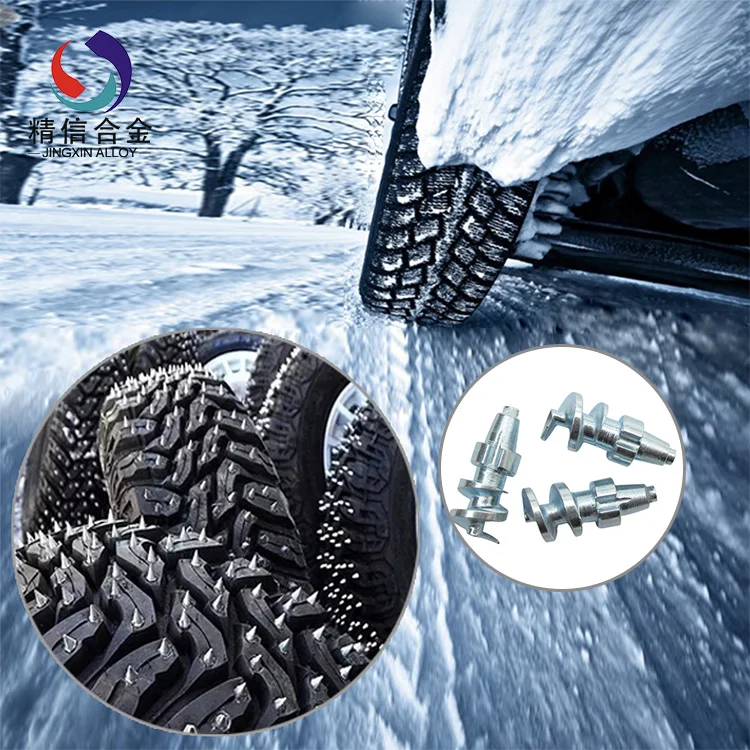
For tires designed for cold weather, there are several indications for tread depth. There are several types of winter tires, the meanings of which are different:
Complain
Thank
Online store KOLOBOX
It doesn't matter if it's summer, winter or all-season tires: tread depth is extremely important. To confirm this statement and determine what the minimum tread depth is, ADAC experts tested winter tires in size 185/60 R14 in new condition and with different tread depths.
It is a well-known standard that the minimum tread depth for passenger car tires in Europe is fixed at 1.6 mm to ensure road safety.
But ADAC's extensive testing has proven that the legally defined profile depth limit only describes a margin of safety. For summer tires, the profile must have a depth of at least three millimeters, and at least four millimeters for winter and all-season tires. Less depth will be critical on wet roads, snow or slush.
The legal situation is clear: when your car tires (usually eight to nine millimeters tread depth when purchased) have worn down to the minimum allowable mark of 1.6 mm, they become more unusable and must be replaced.
However, in some European countries, such as Austria, winter tires with a tread depth of less than four millimeters are considered summer tires and are even allowed to be driven on some routes in winter.
Check the tire tread depth several times a year for your own safety, and remember that the minimum tread depth of 1.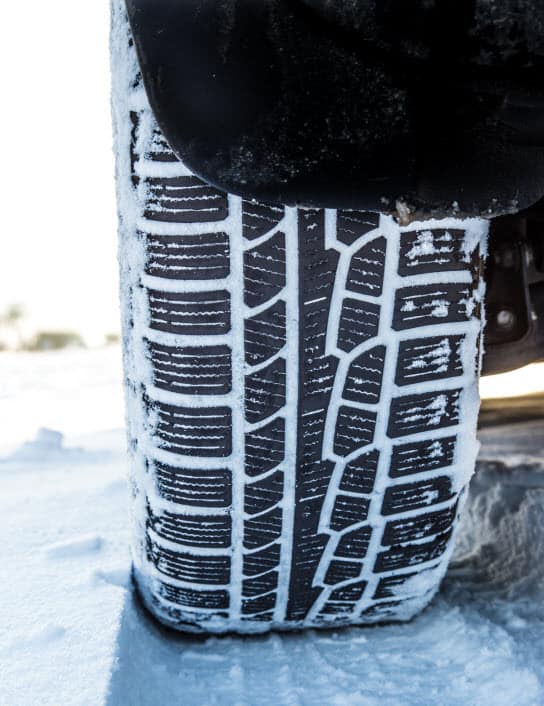 6 mm is strictly legal. For safe driving, tires should be changed from a tread depth of 3 or 4 mm.
6 mm is strictly legal. For safe driving, tires should be changed from a tread depth of 3 or 4 mm.
In order to find out what effect a small tire tread depth has on tire performance, the ADAC test team tested 185/60 R14 winter tires in new condition (profile depth of about 8 mm), as well as worn with 7.5 and 4 mm tread depth.
On snow, the differences between new and used tires were most pronounced. The braking distance of tires with a profile depth of 4 mm was already 3.2 meters longer at a speed of 30 km/h than with new tires.
Even more dramatic were the differences in traction when the tires needed good grip at launch or on inclines. The traction force depends on the depth of the sipes: the tread grooves "capture" loose snow, and the edges of the sipes adhere to a harder surface.
Here, even the 7.5mm residual tread option is only able to gain 60% of the traction compared to the new tire, notes a Shina.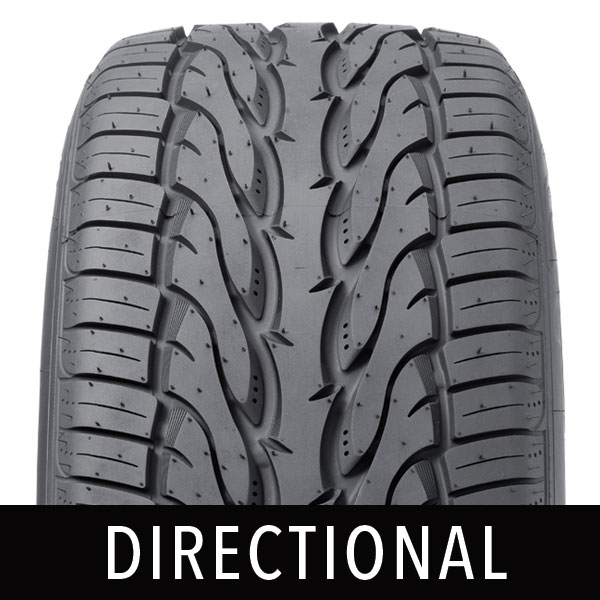 Guide technician. Tires with a tread depth of 4 mm do not even reach half the result of new winter tires. What can we say about tires with a legally fixed minimum tread depth of 1.6 mm, which simply have nothing to row snow with.
Guide technician. Tires with a tread depth of 4 mm do not even reach half the result of new winter tires. What can we say about tires with a legally fixed minimum tread depth of 1.6 mm, which simply have nothing to row snow with.
During the test, the ADAC testers tried, among other things, to evaluate the traction of summer tires on snow, but the most they could show was a quarter of the traction of a new winter tire and more than 7.5 meters of additional braking distance at a speed of 30 km/h .
On wet pavement, it is important to avoid sudden hydroplaning, which means that tires with longitudinal grooves and sipes should absorb and displace as much water as possible.
Tires worn down to 4 mm begin to “float” on the water already at a speed of 63 km/h, while new winter tires do not until the moment when the speedometer needle reaches 87 km/h.
In braking performance from 80 km/h on wet road surfaces, tires with a profile depth of 4 mm lose 7% of the braking distance to the new ones.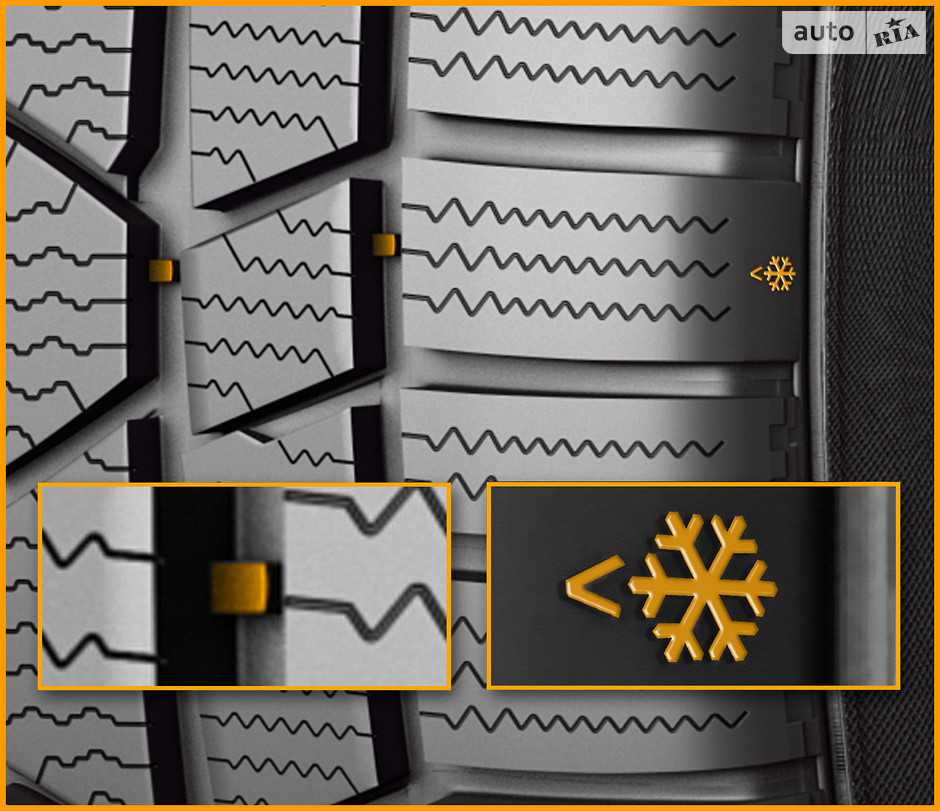
The difference in stopping distance between new and worn winter tires on dry pavement is also present. But the advantage in this matter is on the side of tires with a small residual tread depth. The reason is simple: flattened tread blocks deform less during braking, so more of the tread is in contact with the asphalt. However, dry roads are hardly a common occurrence even in countries with mild winter climates, and it turns out that in practice there are no advantages!
Testing with winter tires proves the huge impact tread depth has on winter tire performance. And this also applies to summer and all-season tires. If you want to be safe, you should change the tires on your car no later than the moment when the minimum tread depth reaches three or four millimeters .
A warning to all motorists: using winter tires in summer is a bad idea. Due to the peculiarities of the tread pattern and the rubber compound, their braking distance is much longer compared to summer tires.